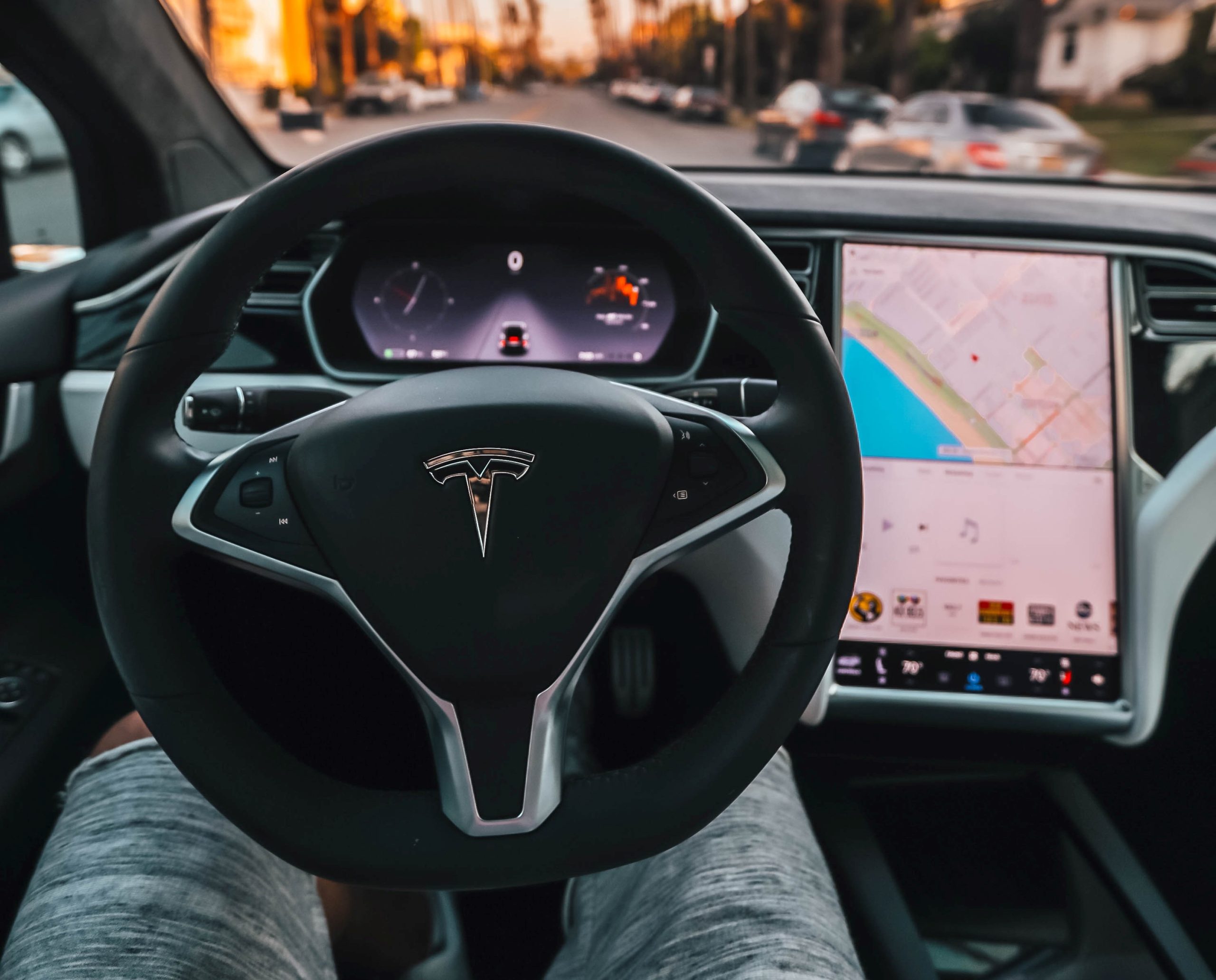Grouping highly automated cars into platoons on highways is a much-proposed method of reducing traffic jams. But it is a very bad idea, says Delft researcher Daniël Heikoop.
(Photo: Roberto Nickson / Unsplash)
Vehicle automation technology is increasing rapidly. It therefore becomes more urgent to understand how humans behave while driving in an automated car. Vehicles that have automated systems such as Lane Keeping Assist or Adaptive Cruise Control not only support drivers in their journey but also place them in a passive supervisory role, scanning for potential hazardous stimuli in the environment or a system malfunction.
‘This passive supervisory role is extremely boring‘
“This passive supervisory role is extremely boring,” says Daniël Heikoop of the Transport and Planning department (Faculty of Civil Engineering and Geosciences). “People are not good at it.”For his PhD research, Heikoop, who performed his research partially at the University of Southampton, had participants drive around in a Tesla on the highway through Coventry (England) with the Autopilot feature turned on. The people behind the wheel were asked to do nothing except supervise and intervene only if necessary.
During the experiments, that lasted for 35 minutes, Heikoop measured the participants’ heartbeat and eye movements. By doing so, he measured their psychological state; their workload, stress and fatigue . He found that people tended to doze off. Eye movements and heartbeat slowed down.
Heikoop, who describes his findings in his PhD Thesis entitled Driver Psychology during Automated Platooning, which he will defend on December 20, witnessed the same phenomenon when he had people drive in a platoon using a simulator.
‘People are not apt to perform the necessary supervisory tasks‘
More advanced technology that includes both lateral and longitudinal control and enables vehicles to drive at close distances from each other (called platooning technology) has the potential to reduce energy consumption and highway congestion, the researcher writes. Such technology places the driver in an even more critical position, as the time headway between vehicles is often less than human reaction time, down to approximately 0.3 seconds.
“Tests have already been conducted in the Netherlands with trucks that drive in platoons. That research did not focus on the effects this has on the driver’s mental workload and responsiveness. My research shows that people are not apt to perform the necessary supervisory tasks. Moreover, they are not trained for it. They do not even know what to look out for, since they don’t understand how the automated car functions; what it can and cannot see.”
“The situation we are heading towards, in which people drive in highly automated cars that still need supervision, is dangerous,” says Heikoop. “We might be better off skipping this phase and have cars drive in platoons only when they are fully autonomous. The automated cars that are around now are not reliable enough. Sensors can malfunction when exposed to very bright sunlight or when covered with mud or snow.”
Daniël Heikoop, Driver Psychology during Automated Platooning, Promotor 1: Prof.dr.ir. B. van Arem (CiTG); Promotor 2: Prof.dr. N.A. Stanton (U-Southampton), 20 December 2017 15:00 Aula TU Delft
Do you have a question or comment about this article?
tomas.vandijk@tudelft.nl


Comments are closed.